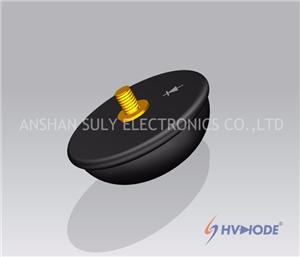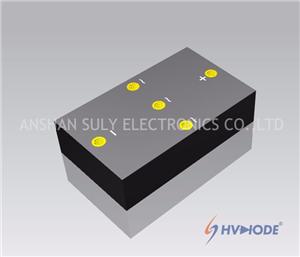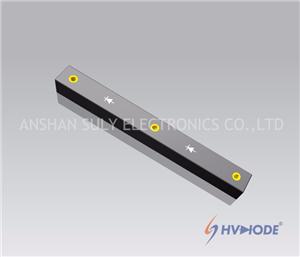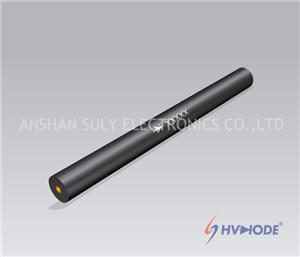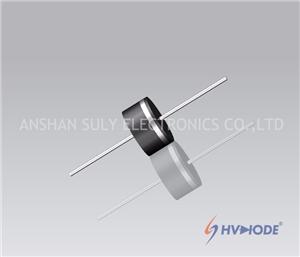- Home
- >
- News
- >
- Industry News
- >
- The Function of High Voltage Rectifier Diode
The Function of High Voltage Rectifier Diode
The function of high voltage rectifier diode has obvious unidirectional conductivity. The high voltage rectifier diode can be manufactured by semiconductor germanium or silicon. The function of high-voltage silicon rectifier diode can breakdown high voltage effectively, low reverse leakage current, and excellent high temperature performance. The function of the high voltage rectifier diode is to convert the alternating current into a pulsating direct current by utilizing the unidirectional conduction characteristic of the PN junction. The main functions of high voltage rectifier diodes are:
1. Forward Characteristic
The most prominent function of the high voltage rectifier diode is forward characteristic. When the high voltage rectifier diode is applied with a forward voltage, the forward voltage in the initial part of the forward characteristic is small, which cannot effectively overcome the blocking effect of the electric field in the PN junction. This section is called the dead zone when the forward current of the high voltage rectifier diode is almost zero. The forward voltage that cannot make the diode conduct is called the dead zone voltage. When the forward voltage of the high voltage rectifier diode is greater than the dead field voltage, the electric field in the PN junction is overcomed effectively, the forward conduct of the high voltage rectifier diode, and the current rises rapidly with the increasing of the voltage. In the normal current range, the voltage at the high voltage rectifier diode terminal remains almost unchanged during turn-on.
2. Reverse Characteristic
Reverse characteristic in the functions of high voltage rectifier diode is the reverse current formed by the drift of the minority carrier current through the high voltage rectifier diode when the high voltage rectifier diode is applied with the reverse voltage not exceeding a certain range. Due to the action of high voltage rectifier diode, the reverse current is small and the high voltage rectifier diode is in the off state. The reverse saturation current of high voltage rectifier diode is affected by temperature. Generally, the reverse current of silicon rectifier diode is much smaller than that of the germanium rectifier diode. The reverse saturation current of the low power silicon rectifier diode is on the order of nA, and the low power germanium rectifier diode is on the order of μA. When the temperature of the high voltage rectifier diode rises, the semiconductor is excited by heat and the number of minority carriers increases.
3. Reverse Breakdown
Reverse breakdown in the functions of high voltage rectifier diodes, reverse breakdown is divided into two cases of Zener breakdown and avalanche breakdown according to the mechanism principle. High voltage rectifier diodes in the case of high doping concentration, high voltage rectifier diodes due to the small barrier region width, high reverse voltage will destroy the covalent bond structure in the barrier region, the electrons are detached from the covalent bond, resulting in electron holes. Another breakdown in the role of high voltage rectifier diodes is avalanche breakdown. When the reverse voltage of the high voltage rectifier diode is increased to a large value, the applied electric field will accelerate the electron drift speed, thereby causing the valence electrons in the covalent bond of the high voltage rectifier diode to collide, knocking the valence electron out of the covalent bond, and generating a new electron hole pair.


